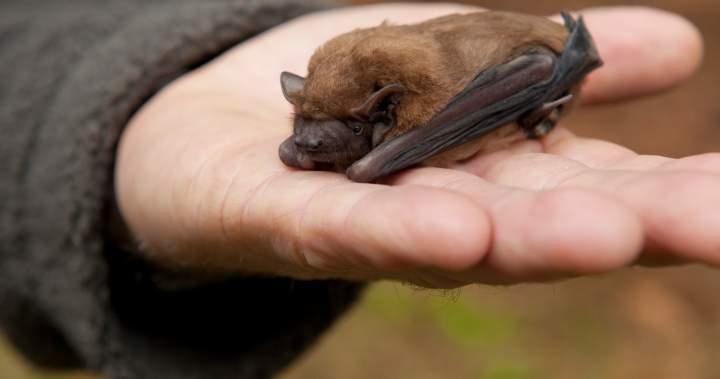The sun is just beginning to set as I pull up to a nondescript building on the University of Saskatchewan campus in Saskatoon. Inside, researchers move with purpose through laboratories where some of Canada’s most innovative pandemic prevention work is underway. This is where scientists are turning to an unlikely ally in the fight against future pandemics: bats.
“Most people think of bats as spooky or as disease carriers,” says Dr. Vikram Misra, a veterinary microbiologist at the University of Saskatchewan, as he carefully handles equipment in his lab. “But what we’re finding is that they might actually hold the key to helping us prevent the next global health crisis.”
The irony isn’t lost on anyone here. Bats have been implicated as reservoir hosts for viruses that caused outbreaks like SARS, MERS, and most recently, COVID-19. Yet these mammals possess remarkable immune systems that allow them to harbor potentially deadly viruses without getting sick themselves.
I watch as a research assistant prepares samples from little brown bats, a species common across Canada. The work requires incredible precision, especially when dealing with genetic material that could unlock mysteries about viral immunity.
“What makes bats special is their ability to coexist with viruses that would devastate human populations,” explains Dr. Darryl Falzarano, another researcher at the university’s Vaccine and Infectious Disease Organization (VIDO). “We’re trying to understand how they do this without developing disease.”
The research team at the University of Saskatchewan is part of a growing global effort to study bat immunology as a proactive approach to pandemic prevention. Their work gained new urgency after COVID-19 demonstrated how quickly a virus can spread worldwide.
The secret may lie in the unique adaptations bats have developed over millions of years of evolution. Flying requires tremendous energy, which generates damaging free radicals in their bodies. To compensate, bats have evolved powerful antioxidant systems and modified inflammatory responses – adaptations that might also help them tolerate viral infections without developing illness.
“Their immune systems are constantly in this state of readiness, but they don’t overreact like ours sometimes do,” Dr. Misra tells me, gesturing toward a diagram showing bat immune pathways. “When humans get infected with these viruses, our immune systems can go into overdrive – what we call a cytokine storm – which causes much of the damage.”
The Public Health Agency of Canada has invested $3.8 million in this research, recognizing its potential to transform how we approach disease outbreaks. The Canadian Institute of Health Research has also provided substantial funding to support the work.
In a nearby section of the lab, scientists are studying bat cells grown in culture, exposing them to various viruses and observing how they respond. This type of comparative immunology – examining how different species handle the same pathogens – could reveal new approaches to treating human infections.
“We’re not just looking to understand how viruses spill over from bats to humans,” says Dr. Falzarano. “We want to know how we might mimic aspects of bat immunity to better protect ourselves.”
The applications could be far-reaching. Beyond developing new antiviral drugs or treatment approaches, this research might help identify people at higher risk for severe disease during future outbreaks, allowing for more targeted interventions.
As I tour the facility’s biosafety level 3 laboratory, where the most dangerous work takes place, the scientific team emphasizes that they’re not working with live bats. Instead, they use cell lines and samples collected during field work conducted with wildlife conservation partners.
“Respect for the animals is paramount,” says graduate student Emilia Rodríguez, who specializes in bat immunology. “Bats are incredibly important for our ecosystems as pollinators and insect controllers. Our goal is to learn from them while ensuring their protection.”
The work represents a shift in how we approach emerging infectious diseases – from reactive to proactive. Rather than waiting for the next virus to spill over into human populations, these scientists are studying potential sources to understand how to prevent transmission or minimize impact.
Data from the World Health Organization shows that approximately 60% of emerging infectious diseases are zoonotic, meaning they originate in animals before spreading to humans. Understanding the interface between human and animal health – what scientists call the “One Health” approach – has become increasingly important in a connected world.
As twilight deepens outside the laboratory windows, I can’t help but appreciate the symmetry: while real bats begin their nightly flights across Saskatchewan, here in this lab, their cellular secrets are helping humanity prepare for whatever pathogenic challenges lie ahead.
“We used to think about infectious disease research in terms of finding treatments after outbreaks occur,” Dr. Misra says as we conclude our tour. “But the future of this field is prevention – understanding these virus-host relationships so intimately that we can stop pandemics before they start.”
In a world still recovering from COVID-19, with experts from the Centers for Disease Control warning that the next pandemic could be just around the corner, the work happening in this Saskatoon laboratory represents a beacon of proactive science. By studying the remarkable immune adaptations of one of nature’s most misunderstood creatures, these Canadian researchers are helping write a new chapter in pandemic preparedness – one where we might someday be as resilient to viruses as the bats themselves.






